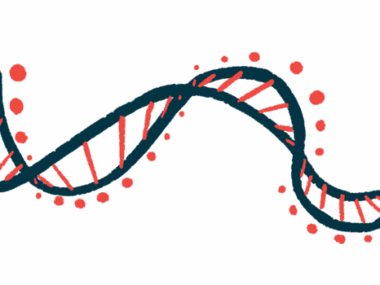$3.7M NIH Grant Will Support Research to Pinpoint Genes Associated With Sjögren’s
Written by |

The National Institute of Arthritis and Musculoskeletal and Skin Diseases, a part of the National Institutes of Health, has awarded a $3.7 million grant to advance studies investigating which genes are associated with Sjögren’s syndrome.
Led by Oklahoma Medical Research Foundation (OMRF) scientist Christopher Lessard, PhD, the research is expected to improve diagnosis strategies and prognosis tools, and to find existing therapies that may be used to treat the condition.
“Current treatments for Sjögren’s only address its symptoms, and just diagnosing the disease is notoriously difficult,” Lessard, an adjunct associate professor in pathology at the University of Oklahoma Health Sciences Center, said in a press release.
“It shares features with many autoimmune diseases,” said Lessard, who has been studying Sjögren’s since 2007. “This can lead to misdiagnosis, which ultimately makes studying the disease challenging.”
Sjögren’s syndrome is an autoimmune disease in which the immune system erroneously attacks certain glands, mostly those that produce tears and saliva, leading to dry eyes and dry mouth.
Understanding the biological mechanisms that govern this immune response is important for understanding the disease — and for the development of new therapeutic strategies that treat the disorder and not just its symptoms. But to date, few genes have been associated with Sjögren’s.
The five-year NIH grant will enable researchers to collect and examine more than 10,000 DNA samples from Sjögren’s patients around the world.
The samples will be available through the Sjögren’s Genetics Network, or SGENE, a network of 26 international research groups that focus on identifying genes associated with the disease.
The initiative, led by the OMRF, has already identified several genes associated with Sjögren’s, but these are still very few compared with those identified for other autoimmune diseases.
“Thanks to these international efforts, we’ve pinpointed 20 genes associated with Sjögren’s in recent years. But we suspect there are many more,” Lessard said. “In contrast, scientists have identified more than 150 genes associated with lupus, which is another related autoimmune disease.”
During the project, researchers will use a tissue biopsy sample to assess how variations in certain genes may change the activity of genes already known to be linked with Sjögren’s.
The research will help to separate patients into subgroups according to their personal disease features. Moreover, it will aid in the development of early diagnosis strategies, as well as helping to identify patients at higher risk of cancer and other serious complications.
If some of the genes that are found also are associated with other diseases, the findings may open up the possibility to test existing medicines in Sjögren’s patients.
“This ambitious work will result in the largest genetic study of Sjögren’s to date,” said Patrick Gaffney, MD, head of OMRF’s genes and human disease research program. “By combining analyses of genetic factors, we should have a much clearer view of the underlying causes of this puzzling disease.”





